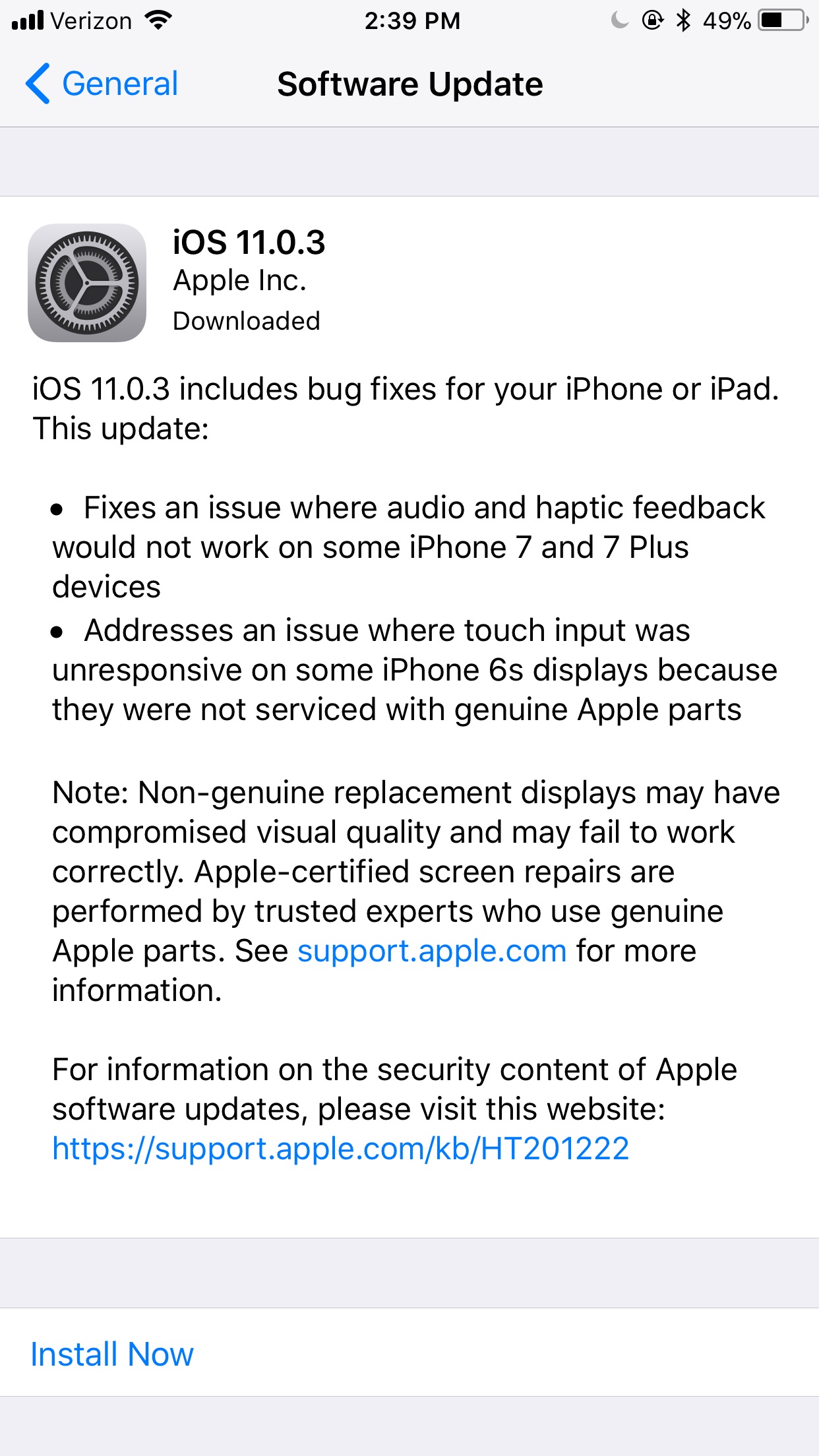Latest iOS Update Shows Apple Can Use Software to Break Phones Repaired by Independent Shops
Credit to Author: Jason Koebler| Date: Fri, 13 Oct 2017 19:24:27 +0000
The release notes for iOS 11.0.3—an iPhone operating system update pushed to customers Thursday—comes with a not-so-subtle warning: Don’t get your phone fixed by anyone who isn’t Apple.
The update fixes a few bugs, namely one that caused a loss of touch functionality on a small subset of phones that had been repaired with certain third-party screens and had been updated to iOS 11.
“Addresses an issue where touch input was unresponsive on some iPhone 6S displays because they were not serviced with genuine Apple parts,” the update reads. “Note: Non-genuine replacement displays may have compromised visual quality and may fail to work correctly. Apple-certified screen repairs are performed by trusted experts who use genuine Apple parts. See support.apple.com for more information.”
This is a reminder that Apple seems to have the ability to push out software updates that can kill hardware and replacement parts it did not sell iPhone customers itself, and that it can fix those same issues remotely.
This message is the latest salvo in an ongoing cold war between Apple and the independent repair world. Apple will only sell official parts to “authorized” repair providers—a program that costs money to join and limits the types of repair that companies are allowed to do. And so independent repair stores have long turned to the grey market, which is made up of largely of Chinese suppliers. Third-party screens do vary in quality—some are just as good as Apple’s original parts (many are made in the same factories, according to people in the repair business)—while others are indeed inferior. Replacement screens are also purchased from electronics recyclers and LCD refurbishers.

Though replacement screens vary in quality, most repair shops do their best to get parts that are just as good as the ones Apple uses (there are several Facebook groups where repair pros name and shame bad suppliers).
The point is, you should be able to go to an independent repair shop to get your iPhone fixed if you want to. They’re often cheaper and faster than going to the Apple Store.
So let’s consider what actually happened here. iPhones that had been repaired and were in perfect working order suddenly stopped working after Apple updated its software. Apple was then able to fix the problem remotely. Apple then put out a warning blaming the parts that were used to do the repair. Poof—phone doesn’t work. Poof—phone works again.
In this case, not all phones that used third party parts were affected, and there’s no reason to think that, in this case, Apple broke these particular phones on purpose. But there is currently nothing stopping the company from using software to control unauthorized repair: For instance, you cannot replace the home button on an iPhone 7 without Apple’s proprietary “Horizon Machine” that re-syncs a new home button with the repaired phone.
This software update is concerning because it not only undermines the reputation of independent repair among Apple customers, but because it shows that phones that don’t use “genuine” parts could potentially one day be bricked remotely.
A scare like this happened last year. “Error 53” bricked many iPhones that had third party screen replacements. After widespread consumer outrage, Apple fixed the bug. It’s because of situations like this that activists are lobbying states to pass “Right to Repair” laws, which would require Apple and other electronics companies to sell official replacement parts to the masses, and would prevent software locks that could make phones unusable because they include third-party parts. Apple is lobbying against those efforts.